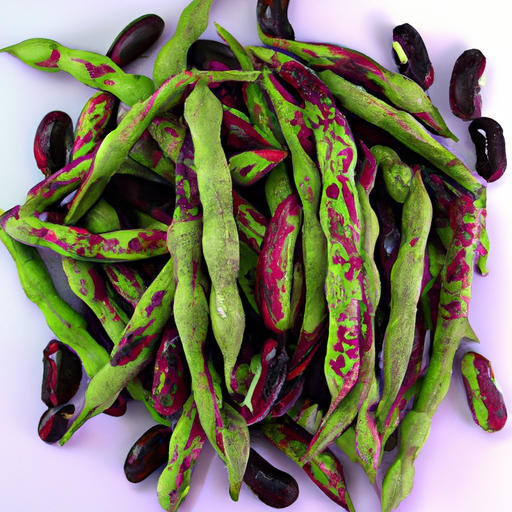Exploring the Delights of Italian Beans
Italian cuisine is renowned for its rich flavors and diverse ingredients. One ingredient that often takes center stage in many Italian recipes is beans. These versatile legumes boast a delicious taste, impressive nutritional profile, and fascinating history. In this blog post, we will dive into the world of Italian beans, exploring their flavors, culinary uses, nutritional benefits, and some intriguing facts.
A Symphony of Flavors
Italian beans come in various shapes, sizes, and colors, each offering a unique taste experience. Whether you prefer the creaminess of cannellini beans, the delicately nutty flavor of borlotti beans, or the earthy richness of chickpeas, there is an Italian bean to suit every palate.
Cooking with Italian Beans
These flavorful legumes play a prominent role in Italian cuisine, adding depth and substance to a wide range of dishes. Here are a few popular ways Italian beans are used in cooking:
Minestra: Italian bean soups, or minestre, are hearty and comforting. Traditional recipes often feature borlotti beans cooked with aromatic vegetables and spices, resulting in a flavorful and satisfying dish.
Pasta e Fagioli: This iconic Italian dish combines pasta and beans in a flavorful broth. The combination of creamy beans, al dente pasta, and a hint of herbs creates a truly rustic and heartwarming dish.
Antipasti: Beans are a staple ingredient in Italian antipasti, or appetizers. Bruschetta topped with creamy cannellini beans, olive oil, and fresh herbs is a popular culinary delight.
Salads: Beans, such as chickpeas or cannellini beans, are often featured in refreshing salads. Combined with vibrant vegetables, herbs, and a tangy dressing, they add a delightful textural component and boost the nutritional value.
Pulses: Italian beans are commonly used in classic dishes like pasta with lentils or chickpeas, showcasing their versatility and ability to elevate the simplest of ingredients.
Nutritional Powerhouses
Beyond their delectable flavors and culinary potential, Italian beans offer a range of health benefits. These legumes are an excellent source of plant-based protein, making them a valuable option for vegetarians and vegans. They are also high in dietary fiber, which aids digestion and helps regulate blood sugar levels. Additionally, beans are rich in vitamins, minerals, and antioxidants, contributing to overall well-being.
A Rich History
Beans have a long-standing history in Italian cuisine, dating back centuries. They were introduced to the Italian peninsula by the ancient Romans, who revered them for their versatility and nutritional value. Over time, beans became an integral part of Italian culinary traditions, finding their way into numerous regional dishes and earning a place of honor on Italian tables.
Fascinating Facts about Italian Beans
Here are a few intriguing facts that highlight the unique qualities of Italian beans:
In Italy, each region has its own favorite variety of beans. For example, cannellini beans are cherished in Tuscany, while borlotti beans are beloved in Lombardy.
Beans are a symbol of good luck and prosperity in Italian culture. On New Year’s Eve, Italians traditionally prepare a dish called “cotechino con lenticchie,” a combination of beans and sausage, to bring luck and abundance in the coming year.
The town of Lamon in the Veneto region is famous for its production of high-quality Lamon beans, prized for their delicate flavor and creamy texture. They are even protected by the European Union as a protected geographical indication (PGI) product.
Conclusion
Italian beans are an integral part of the country’s culinary heritage, offering a wide range of flavors and culinary possibilities. Whether incorporated into soups, pasta dishes, salads, or antipasti, these legumes bring depth and nutritional value to Italian cuisine. So, why not embrace the beauty of Italian beans and explore the delicious world they have to offer? Buon appetito!
Italian Beans
- Origin: Italian beans are varieties of beans that are commonly used in Italian cuisine. Beans have been cultivated in Italy for centuries, with some varieties having specific regional origins.
- Common Uses: Italian beans are versatile and used in a variety of dishes in Italian cooking. They are often used in soups, stews, pasta dishes, salads, and side dishes. Classic Italian bean dishes include pasta e fagioli, minestrone soup, and fagioli all’uccelletto.
- Nutritional Benefits: Italian beans are a nutritious ingredient. They are an excellent source of plant-based protein, dietary fiber, and complex carbohydrates. They are also low in fat and cholesterol-free. Beans can be a good source of iron, folate, magnesium, and potassium.
- Unique Properties: Some well-known Italian bean varieties include Cannellini (white kidney beans), Borlotti (cranberry beans), and Lamon (a variety from Veneto). Each variety has its own unique taste, texture, and cooking properties.
- Historical Significance: Beans have been a staple in the Italian diet for centuries due to their availability and affordability. They have played a significant role in Italian cuisine, especially during times of economic hardship. Many traditional Italian bean dishes have deep roots in rural and peasant cooking. Today, Italian beans continue to be a cherished ingredient in Italian culinary traditions.




Use the share button below if you liked it.
It makes me smile, when I see it.